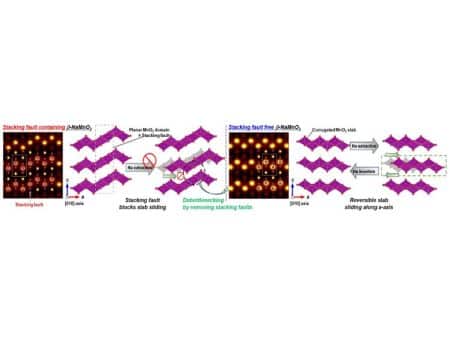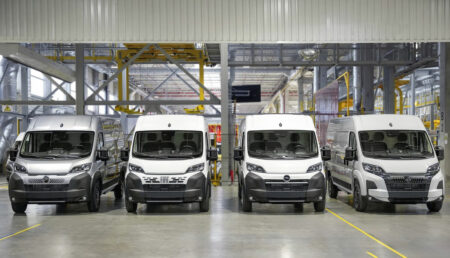In the context of the energy transition in the transportation sector and the removal of emissions from supply chains, hydrogen fuel cells provide an alternative source of electricity, but the electricity is generated by connecting hydrogen stored in the vehicle to an electrochemical cell, rather than by electric current.
According to the Energy Monitor website, hydrogen fuel cells, electric vehicles emit only water through their exhaust pipes, and hydrogen can be recharged faster than traditional vehicles, conserving a significant amount of power while in operation.
A gallon (3.78 liters) of diesel produces the same amount of power as 1 kilogram of hydrogen.
$100 trillion to decarbonize global supply networks, according to a new research
With global supply chains in distress and the COVID-19 pandemic’s ramifications resulting in lesser demand during 2020 lockdowns, reports of ships queuing to enter ports and empty and congested cargo containers continue to circulate.
It isn’t simply the shipping industry. The International Labor Organization warned at the end of last year that road freight supply chains had been hit by a slew of COVID-19 epidemic restrictions, driver shortages, and substantial fuel price hikes.
It’s worth emphasizing that the effects of the Corona epidemic revealed the economy’s vulnerability to big shocks, with further shocks likely in the coming years as a result of the fast change of global energy, which is altering decades-old institutions and technology.
The train that runs on hydrogen
According to Robert Windsor, executive director of the British International Shipping Association, “the energy transition is very important,” and “some multinationals are sharing experiences with new technology,” but “many companies are still trying to figure out the practical implications of how it affects their business.”
The energy shift, according to Professor Edward Anderson of Imperial College London Business School, will complicate the process of getting energy and increase its unpredictability.
He goes on to say that this is owing to the large proportion of variable renewables like wind and solar energy, as well as mineral supply chains and complicated balancing systems, stressing that each element of the energy revolution is a potential disruptor.
Recognizing the significance of decarbonizing the transportation industry, the European Union has stated its intention to decrease CO2 emissions from trucks by a third by 2030 compared to current levels, encouraging heavy vehicle manufacturers throughout the world to build new future models.
Hydrogen’s Function
Analysts believe that electric cars will eventually dominate the passenger transportation industry, and the world’s largest automakers are battling to accomplish this aim, despite the fact that the usage of batteries to power heavier vehicles is more complicated, according to Energy Monitor.
The lithium-ion battery can power a 44-ton truck, decreasing the amount of space needed for shipping.
Furthermore, present battery technology has a restricted range and a significant charging period, which may have an impact on carriers’ bottom lines.
It’s worth noting that Asian automakers are at the forefront of the hydrogen-powered transportation business. In 2020, Hyundai, a South Korean conglomerate, will release the Hyundai Accent truck to the general public.
When the Xeon’s tank is full, it can drive 250 miles (402 kilometers) and takes 8 to 20 minutes to fill.
In Switzerland, a trial project is underway in which carbon-neutral cars are exempt from paying road taxes, hydropower supplies dependable carbon-neutral electricity, and Xiont trucks distribute to seven supermarkets and logistics organizations.
By 2025, the business plans to supply 1,600 hydrogen fuel cell trucks to the country.
Infrastructure Development for Hydrogen
European governments are planning to put hydrogen vehicles on the road, with EU Transport Commissioner Adina Folian estimating that 60,000 hydrogen trucks will be on European roads by 2030.
Cabinet would participate in a range of research and innovation efforts focusing on hard-to-decarbonize modes of transportation, such as heavy road freight, according to the UK’s Hydrogen Strategy, which was released in the summer of 2021.
The requirement for hydrogen supply is one of the most significant obstacles in developing hydrogen transportation systems, as hydrogen must be pure in order to contribute to the energy shift.
The European Union has been chastised for not doing more to enhance the deployment of electric car charging stations, with just 225,000 public charging stations accessible by the end of 2021.
When compared to hydrogen filling stations, these figures are optimistic, since France, Germany, the United Kingdom, and Italy collectively scored just 218 points by the end of 2020.
Because the deployment of manufacturing and refueling infrastructure is still insufficient, some analysts believe hydrogen might play a role in the truck industry.
Fuel cell electric cars are still more expensive than battery electric vehicles, on which a lot of money has been spent over time.
In comparison to electricity that is directly delivered to the vehicle, hydrogen is an inefficient fuel, and a significant amount of energy is lost in the process of electrolysis of water to generate hydrogen, cool it, transport it, and finally convert the fuel back to electricity.
Tom Baxter, a lecturer at the University of Aberdeen in the United Kingdom, thinks that the efficiency of hydrogen fuel is not higher than 38%.
Transporting hydrogen without converting it to ammonia or methanol is difficult due to its caustic and extremely combustible nature.
Only 0.1 percent of hydrogen now generated in the globe is made from renewable power sources, according to a 2021 Fitch Ratings research, and the vast bulk of hydrogen is still produced by carbon-intensive steam reforming of methane.








